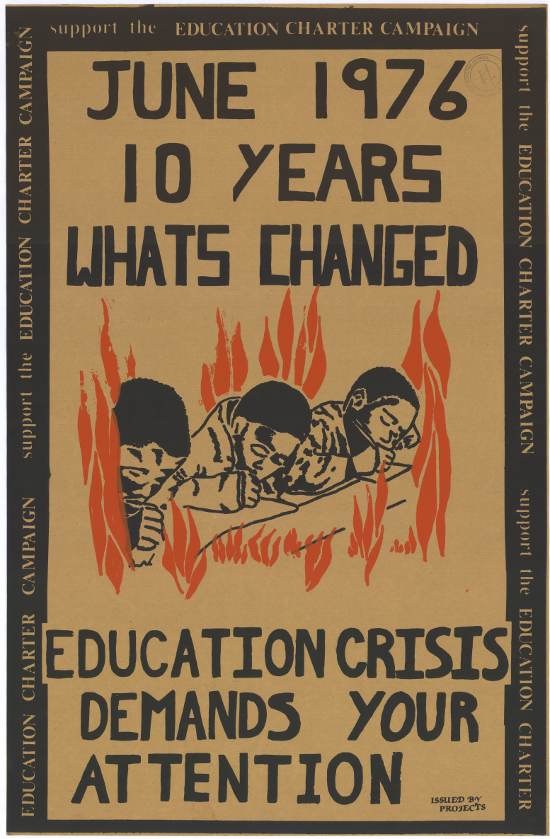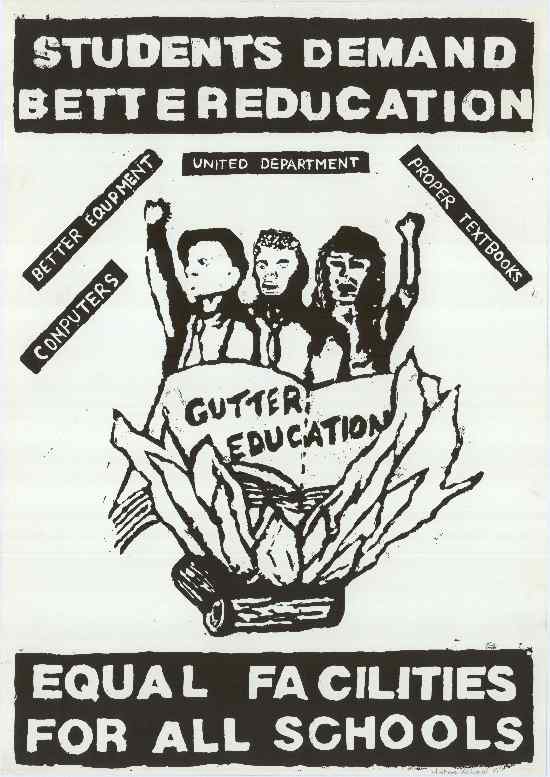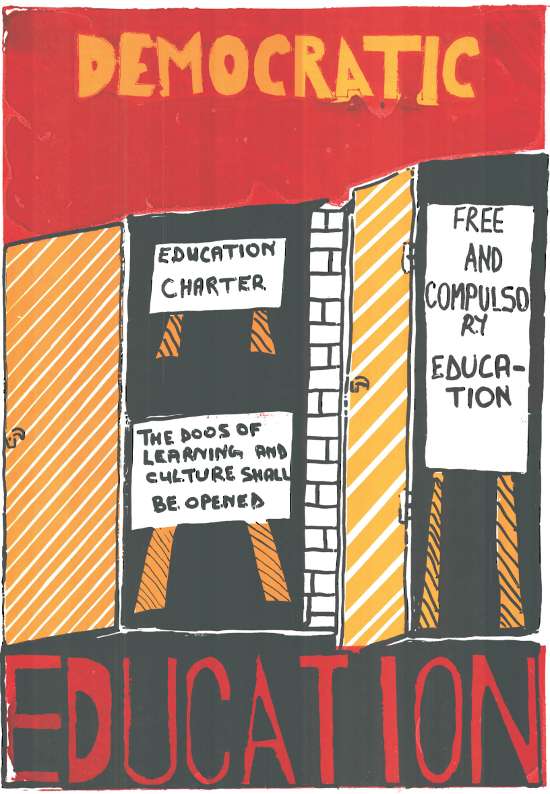|
17 February 2016
AN INTERN REFLECTS: How do posters from the 1980s speak to the current political climate surrounding education?

This poster from 1986, archived as part of the SAHA Poster collection (AL2446), is surprisingly relevant to the current political climate in South Africa. The crisis in South Africa’s education system, both at a schooling and tertiary level, is within the public eye. Students and others are frustrated that the post-apartheid era of hope in South Africa during the 90s has not resulted in the anticipated changes. The core of the Soweto uprising in 1976 was discontent with unequal facilities and the denial of quality education to black students. Today in 2016 black learners are still excluded from quality education. Students are beginning to realise their power and are now exercising it.
The push for the right to free education has been of importance from the beginning of the anti- apartheid struggle movement. Education is seen as a means of escaping poverty through self-betterment. How is this possible when students are financially excluded and not able to afford fees? The problem is not merely access to education but access to quality education.
During the #feesmustfall protests, students used twitter as a means for rallying and coming together. Through twitter, the call to protest was spread quickly across the country. Before the advent of social media other means of communication were needed, such as radio, posters and coordinated groups. The format of the slogan as a twitter hashtag is indicative of the power of catch phrases on social media. The poster is a snapshot of how organisation happened. The media’s portrayal of the current student protest was slanted and twitter was one of the ways that on-the-ground reporting took place.
The reactions of police to the peaceful student protests have echoed a painful apartheid past. These protests are uncomfortably similar to the protest of 1976 and the resistance of the 1980s where tear gas and police brutality were a real threat to protestors. People shared photos and status updates on social media allowing the protest to be experienced on a global scale. They also showed police brutality as experienced by the students. What is interesting is the feedback received on twitter, such as advice on how to deal with teargas.


Looking at these posters, they speak to both the past and the present. The youth of today are demanding that they be allowed access to quality education. They want to stop the trend of financial exclusion being a proxy for racial exclusion. Government and higher education institutions have had to react and the students of today have hopefully influenced the future of education in South Africa for the better.
The importance of these posters today could not be more relevant. SAHA will be publishing a commemorative edition of Images of Defiance: South African resistance posters of the 1980s later in the year organised by Struggle for Justice (SFJ) Program.
|







